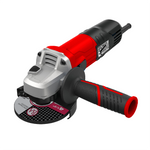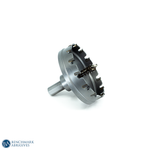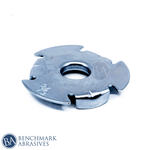
How to Use a Hole Saw?
When working with different types of materials like natural or synthetic timbers, glass, plastic, ceramics, and metal to get neat & clean-cut, everyone looks for Hole saw.
Hole saws helps you to get effective results with powerful performance. It is a time-saving tool. You will most likely need to use different types of hole saws and different drilling methods. But, how to use a Hole saw for beneficial output and effective cut?
Here in this article, you will find a brief discussion on how to use a Hole saw efficiently?
1. First ensure you are using a proper and effective Hole saw drill for a cutting hole.
A rechargeable cutting drill performs better on a thin and soft metal surface, Although you need at least a 14V drill for cutting.
Never try a borehole with rechargeable or battery-operated drill on masonry wall or hard surface (anything above around 50 mm).
2. Before using a hole saw, always outfit yourself with sufficient PPE protection wear.
This should always include fitting goggles or glasses, a suitable dust mask for the material being cut, and good quality work gloves at the very least.
Never wear loose clothes that may get snagged in the hole saw, such as baggy sleeves or hanging jewelry, and always tightly tie back long hair.
3. Never try to push the drill bit through any faster than it needs to go, regardless of the material or surface you're working on.
The standard method to obtain a neat and perfect round hole is to work with gentle, and constant pressure.
Start with slow and then increase your rotation speed gently as you go.
4. The major significant issue in terms of hole depth, apart from the power rating of the Hole saw drill, would always be the basic design of the hole cutter, and particularly the way it is designed to work with the material getting expelled.
Usually, a discarded material block accumulates within the hollow center of the hole saw, ultimately blocking and prohibiting it from dropping after a certain depth.
At this point, the user can need to use a screwdriver or related poking tool to clear out the discarded material.
This can be achieved in many cases through the realistic 'pace slots' that many brands cut into the sidewalls of their hole cutters for this very purpose.
For this purpose, more advanced designs might feature an ejector spring, normally wrapped around the central arbor if one is present.
5. Make sure an accurate perpendicular (90-degree) angle to the floor and workpiece surface you are working on.
This is the easiest way to avoid bonding and locking of the hole saw, or even burning out the drill motor.
Read More: What is hole saw and its applications
6. Be careful while using a hole saw, it can cause very fast and aggressive binding/jamming of the drill when going in at a slightly off-center angle or striking a drill while drilling.
Check that the entire perimeter of the cutting edge of the hole saw makes even contact with the work surface all the way around before beginning to drill.
7. It is best to use an arbor or pilot bit while making a deep borehole in metal sheets and solid materials. It prevents the hole cutter from drifting on the workpiece surface during the primary phase of the cut.
These pilot bits placed at the center of the hole saw hollow cylinder, whether included as part of a hole saw package or purchased separately, and are usually removable or adjustable.
They normally stretch beyond the open cutting end of the hole saw from 10-30 mm anywhere, and can also add an ejector spring mechanism to help jettison loose material build-up plugs.
8. Be careful that going directly from one side to the other with a hole saw will produce a lot of 'blowout' (material tearing) on the reverse side if you try to drill a hole clean through a workpiece.
This is due to the width of the bit of the hole cutter and the resulting removal of a significant volume of material.
A good strategy to counter this is to wait until the arbor or pilot bit breaks through - then move to the rear side (if available) and drill back the way you came, using the pilot hole as a reference, to a depth of a few millimeters.
Return to the starting side and complete the full depth of the hole cut once you have done this.
9. One common Hole saw issue observed on many worksites and DIY projects is to drill a larger hole instead of an existing smaller one. For example, fitting a new halogen downlight of wider diameter.
This is difficult since the arbor or pilot bit is generally nowhere to sit in order to start the cut cleanly and steadily.
Clamping a scrap piece of timber behind it will give you a surface to drill your pilot hole into if the rear side and edges of the workpiece are available.
If this is not practical, anything like a hole saw re-work adapter (pictured on the right) will be a very helpful optional accessory, which enables the user to connect two separate diameters of hole saw bits simultaneously.
The smaller 3" hole saw thus functions as the guide or arbor bit (sized to the current hole width), and a new, larger hole around it is then cut by the larger attachment.
10. While working, Consider using an attachment such as a dust cape to cover the hole saw bit, This avoids unnecessary leakage of dust when boring out wide holes.
These simple accessories protect the drill by preventing dust from entering into the engine directly, especially while working.
Dust covers normally work via a central hole by allowing the shank of the arbor and flexing as you drill to allow easier access to the work surface.
After completion of the task (hole), the dust cape collects all the dirt and waste for quick and easy disposal.




































































